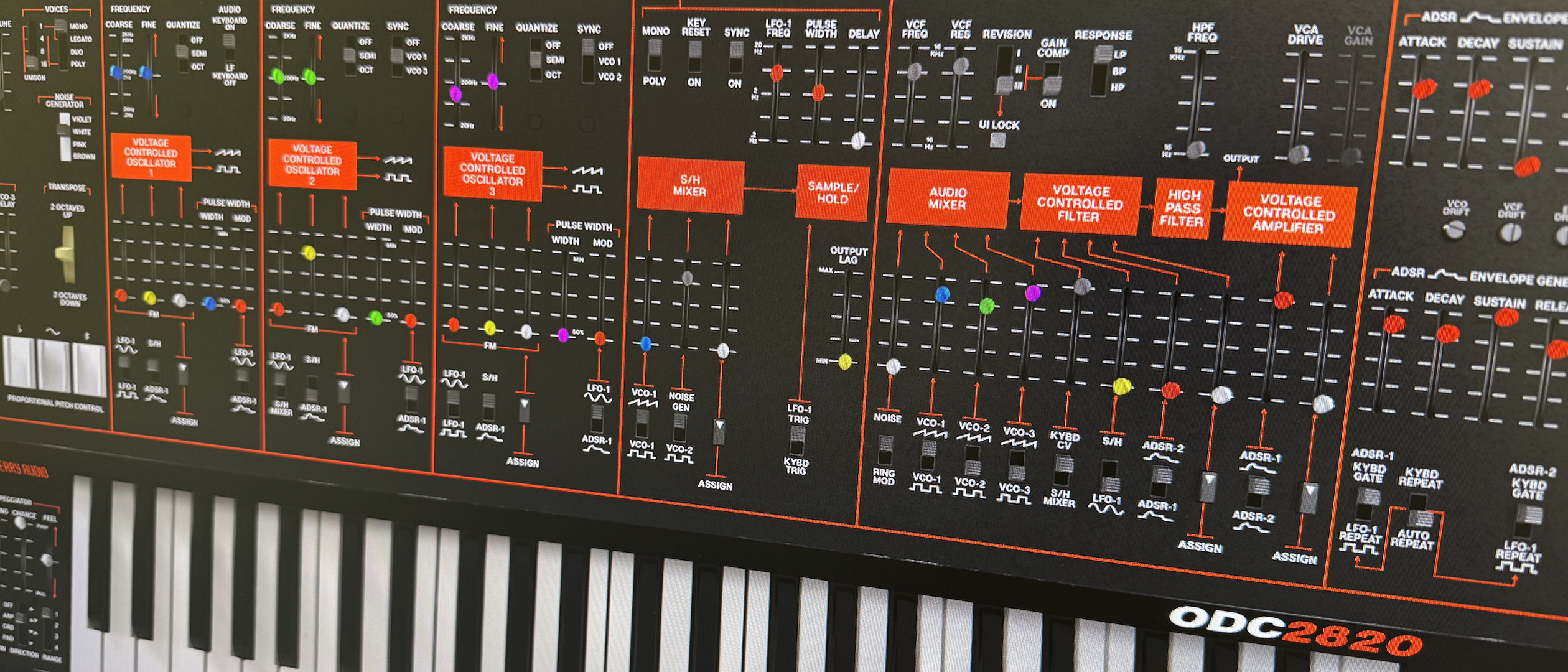MusicRadar Verdict
The ODC 2800 is one of the finest-sounding and best-looking synths around. Cherry Audio continue to provide us with some of the best software instruments available, so we’ll push the boat out here and say that this could be its finest synth plugin to date!
Pros
- +
Beautiful reincarnation of an eternal classic from ARP
- +
Includes the 3 original filter designs, with ARP colour schemes to match
- +
There’s a host of new inclusions, such as a third oscillator and additional LFO
- +
You can take the ODC up to 16-note polyphony
- +
The price! It’s a steal!
Cons
- -
You might choose your favourite filter, based on the colour scheme!
MusicRadar's got your back
What is it?
For the benefit of anyone who has been hiding under a rock for the last few years (presumably working tirelessly on your DAW), Cherry Audio has been working equally tirelessly, creating some of the finest reincarnations and enhanced versions of beloved machines, from the last 50 years of music technology history.
Graphically and sonically, it feels like they are getting better and better, with a resplendent track record which is proving exceptionally popular with users, in a crowded market. For their next venture, they return to ARP, reinvigorating one of the most beloved classics of all.
In a slight play on letters and words, Cherry’s ODC started life as a faithful recreation of the ARP Odyssey.
Upon its release, the original hardware Odyssey was deemed to be a more affordable option than the Minimoog, at a time when there was limited choice. The Odyssey proved to be popular - very popular! Despite ARP’s regrettable bankruptcy in 1981, the Odyssey remained in production throughout its dominant years, with three different revisions, each armed with a different filter and subtle upgrades.
In true Cherry Audio style, its starting point for the migration of vintage hardware to software, was the architecture and sound of the original.
We have been admirable owners of hardware Odysseys (in their original and reissued guises), so have considerable experience in their operation and sound. This is just as well, because they do have an uncanny capacity to catch you out, operationally speaking. We have often seen people staring at the panel, wondering why they can’t get a sound! No such dilemmas here. Cherry has populated the ODC with 330 impressive presets.
Leaving the presets aside for one moment, we instantly noticed a significant change relating to the oscillator section. The original hardware hosted a two-VCO arrangement.
Want all the hottest music and gear news, reviews, deals, features and more, direct to your inbox? Sign up here.
To keep pace with other products and arguably draw influence from the ARP 2600, Cherry has included a third VCO in the oscillator section. This is spectacular stuff! In a two oscillator assignment, the original Odyssey was impressive enough - you only have to ask the long queue of artists, from Yellow Magic Orchestra to Ultravox and the BBC Radiophonic Workshop, to endorse that - but there is no doubt that a third oscillator could be really useful and become indispensable for chordal-constructs, being one of our favourite analog synthesiser pursuits.
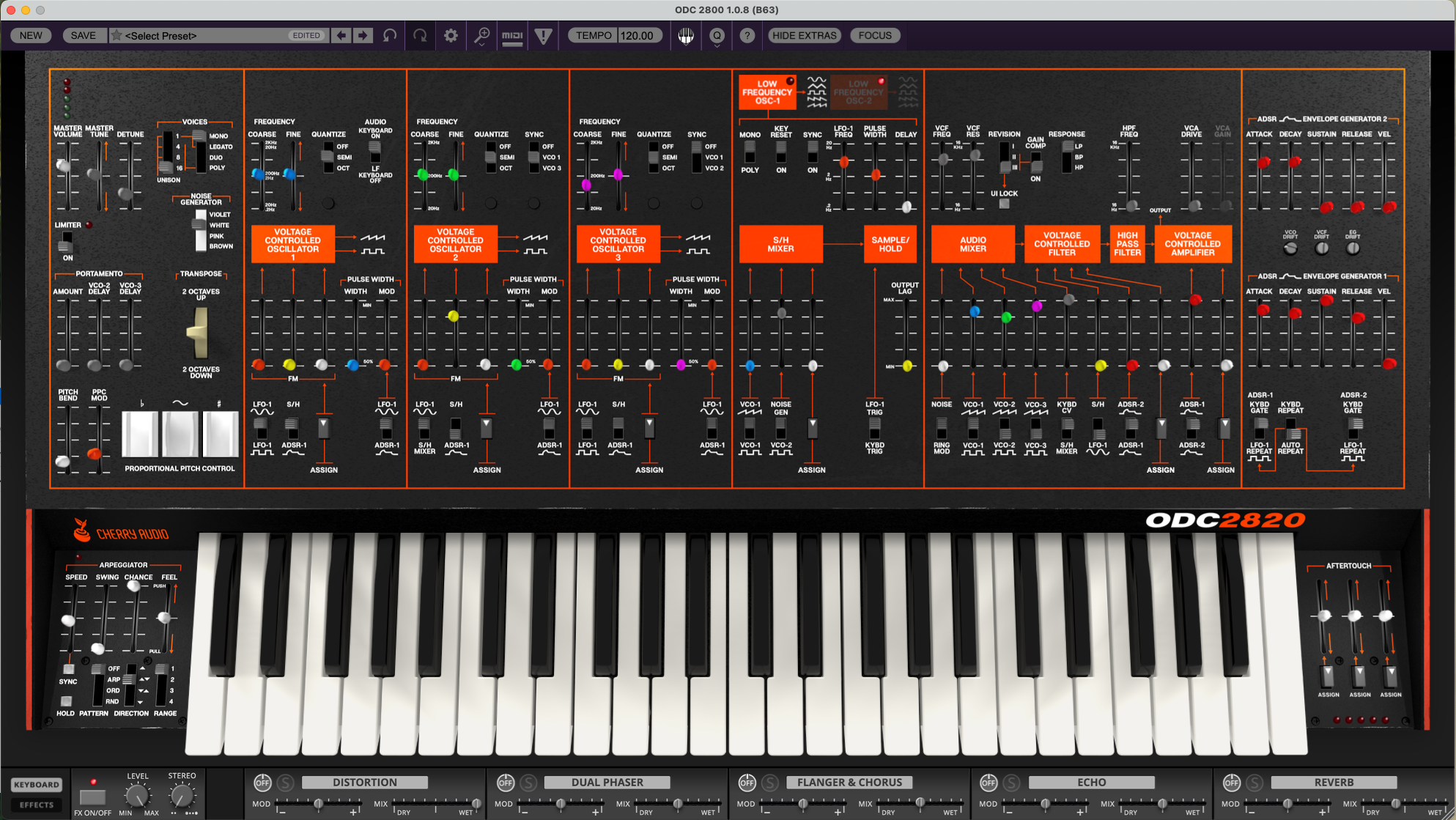
Performance
Testing, testing…
ARP synthesizers behave in a really interesting way, particularly at the most basic level. We therefore started putting the ODC through its paces by initialising a patch and auditioning the raw VCOs. ODC is based on a classic subtractive machine, so upfront wave selection is relatively restricted by today’s standards, but don’t let that fool you! In the first instance, the saw and pulse waves sound rich and colourful, although we did immediately notice that in this initialised state, tuning between oscillators was a little too good to be true. It was essential to nudge the fine-tune of the secondary VCO, to promote the fatness of sound that you would expect.
There is another important aspect to this, because ODC also models the original ARP ring modulation circuit, sounding every bit as good as the original. To make the ring mod really ‘ring’, it’s beneficial to subtly detune the VCOs against each other. This has always been a favourite of ours, particularly when used alongside the original’s duophonic mode.
Staying within the oscillator domain, Cherry has maintained the modulatory elements for each VCO while adding a third assignable option, which presents a long list of modulation protagonists, for potential modulation mayhem. This includes envelope and LFO, and a significantly extended noise menu, with violet, brown and red noise, alongside the more usual white and pink noise.
Beyond our elemental testing, the new construction (with the additional VCO) opens up another level. Even a basic construct of two VCOs and a sub transports the ODC to a new dimension, and then there’s the legendary ARP sync! It didn’t take long for us to try this out, employing one of the envelope generators to provide the sync sweep.
It's worth noting, though, when you move to the envelope section (on the far right), envelope 2 is above envelope 1! This caught us out for a few seconds, until we read the legend… obviously!
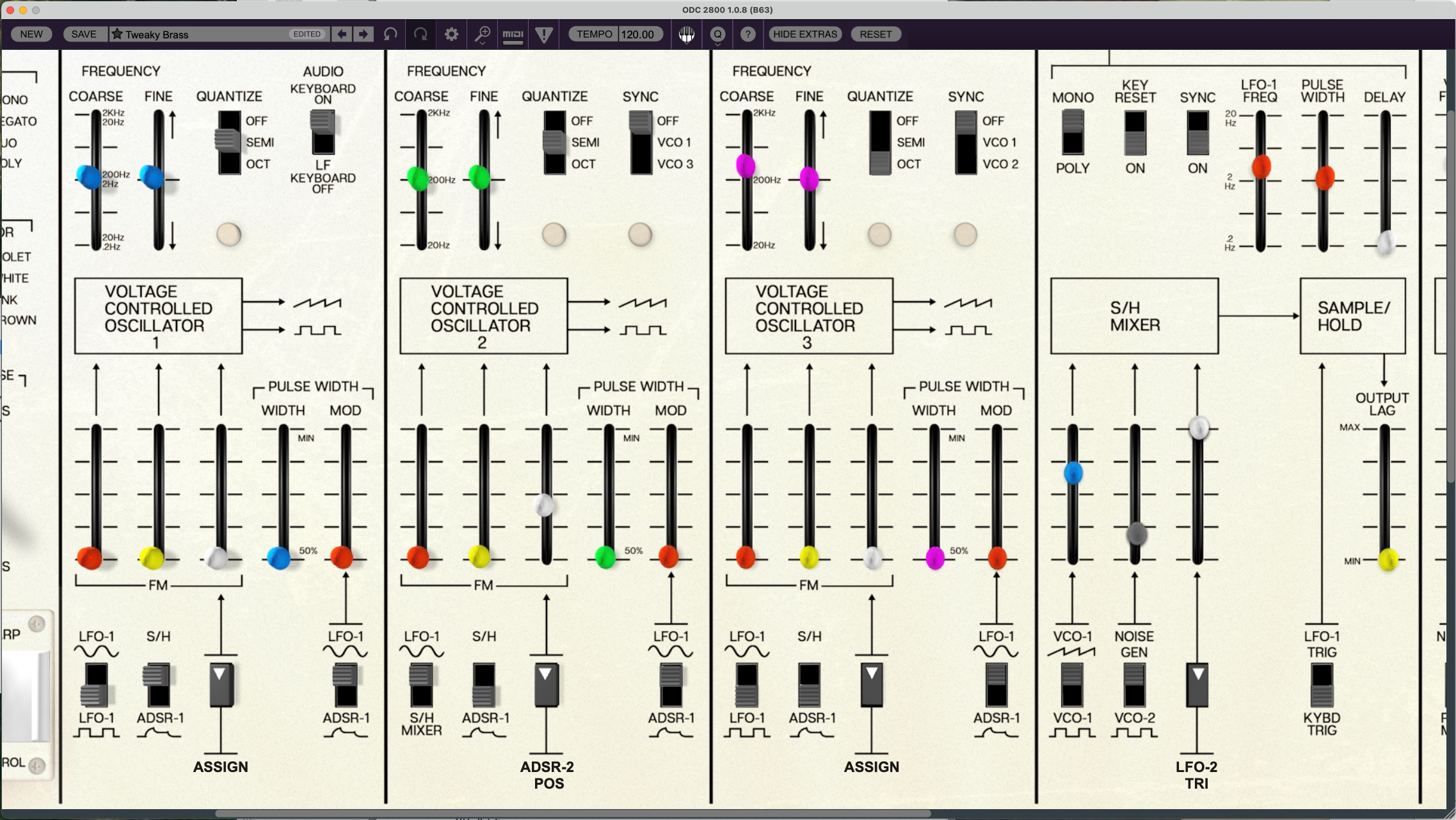
Changing colour schemes
If you audition any of the curated presets, you might be wondering why the colour scheme keeps changing, from a white fascia to black and gold, or black on orange?
This relates entirely to the revision model of Odyssey. The white Mk1 gave way to the black and gold Mk2, which was superseded by the black and orange Mk3. But it’s not just colour schemes, because each Odyssey revision provided a different style of filter. The Mk1 employed a 12db/2-pole filter, while the Mk2 and 3 offered a 24db/4-pole filter, from 4035 and 4075 chips respectively.
Everyone has their favourite filter, and that goes just as much for the colour scheme as it does for the filter timbre itself, so it’s even more appealing that we get to choose which we use, by flicking the filter revision switch in the VCF section. If you find yourself wanting to stay with a Mk3 colour scheme, but want the Mk1 filter, you can also hit the UI Lock button, which will maintain the selected colour, regardless of filter selection. (We always did prefer black and orange - classic ARP!)
The main low-pass filter is equipped with a resonance control, but the low-end frequencies do have a habit of dissipating once the resonance is applied. Thankfully, the Gain Compression switch will reinstate the low-end, even while the resonance is squealing. You can also switch the filter mode to band-pass or high-pass mode, and there is a dedicated high-pass filter too, for extended frequency control.
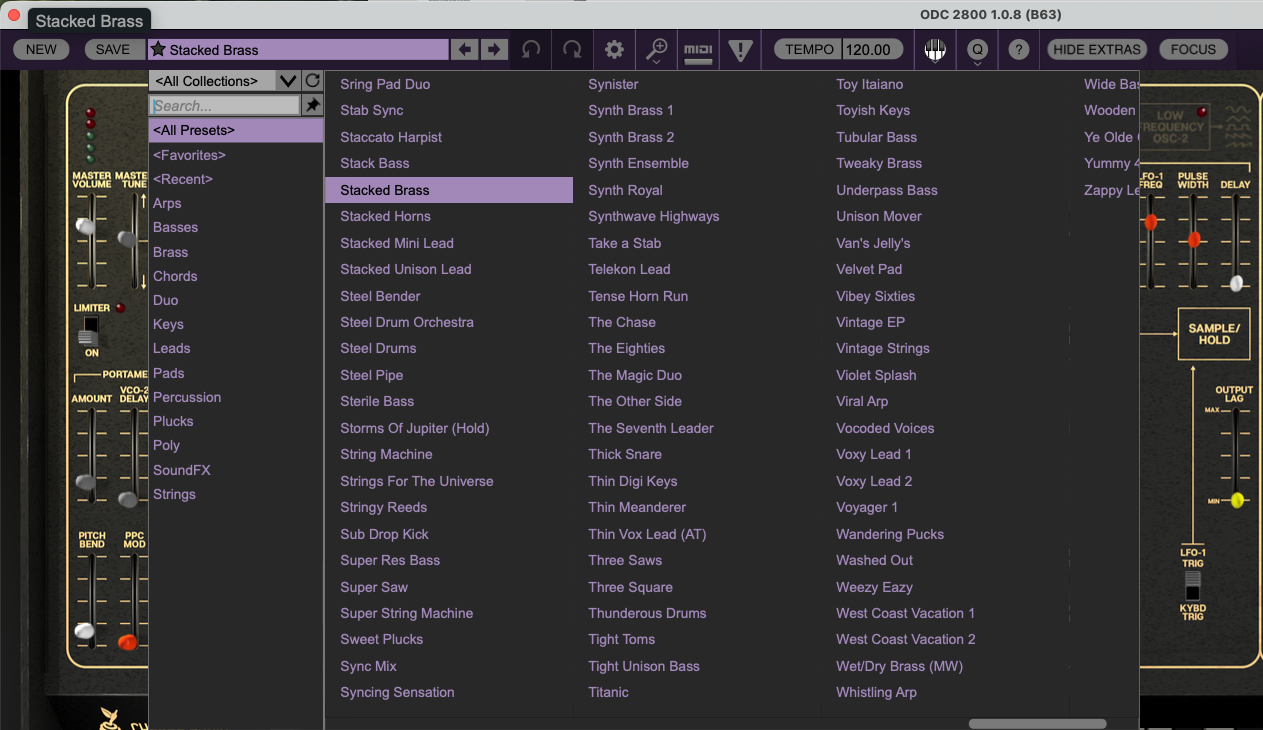
Complex is best!
Cherry Audio have remained very respectful to the original, but let’s be honest, the original was no slouch in the modulation department. Cherry has built upon this, so while they have maintained the envelope generators (with the useful auto repeat function), they have also included a second LFO, for additional LFO modulation options. They have also extended the LFO waveforms available, alongside the ubiquitous sample and hold modulation, equipped with lag.
Other notable enhancements include an onboard arpeggiator, aftertouch assignment, and a very classy ‘smart portamento’, fashioned after the CS-80, for enhanced musical performance.
One subtle but helpful switch relates to the FX section, which is located at the bottom of the plugin. There is immediate access to the five very usable effects, right underneath the keyboard. Left/right faders allow application of modulation, or adjustment of the wet/dry mix. Move to the far left, and you can select Effects instead of Keyboard, which swaps the keyboard display for five effects units, in a beautifully stylised array, and without the need to switch to a secondary page. It’s nicely done!

Verdict
The Cherry Audio ODC 2800 is yet another sublime example of how good software synthesisers can be. The scalable plugin window, coupled with the ever-present ‘Focus’ mode (which immediately zooms in on an area that you wish to work on), makes editing and control a total delight. But the visuals come a very close 2nd to the winning sound of the ODC. It’s every bit as impressive as an original Odyssey, and equipped with some logical and welcome enhancements.
It’s production-ready status rubber-stamps its authority over any track where it’s deployed. Bass sounds are thunderous, lead sounds are searing, and thanks to its ability to extend to a full 16-note polyphony, you can now generate beautifully subtle, evolving or gnarly pads and stabs. Alternatively, compile all 48 oscillators in unison mode, which could reduce your cones to a total mess!
For any fan of electronic music, you are likely to find yourself continually thinking that you’ve heard the sound of the ODC 2800 before, and that’s most likely because you have, but thanks to Cherry Audio, you’ve not heard it like this! As for building on perfection, this is probably as good as it gets!
Hands-on demos
Cherry Audio
Alternatives

Another very classy reincarnation of the ARP Odyssey. Now in its third revision from GForce Software, it maintains many of the classic features in their original form, with some very useful additions.
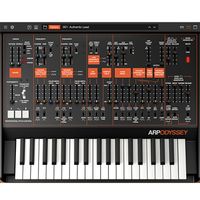
Emanating from Korg, who faithfully reintroduced the ARP to the hardware market, its software reproduces the original circuitry using its Component Modelling Technology.
Specifications
Price | $59 |
Key features | 3 x VCOs per voice 1 to 16 note polyphony 3 x different filter revisions, reflecting the original hardware 2 x LFOs 2 x Envelope Generators 5 x simultaneous effects |
Requirements | Mac & PC : AU, VST/3, AAX plugin formats, and standalone version |
Contact |
Roland Schmidt is a professional programmer, sound designer and producer, who has worked in collaboration with a number of successful production teams over the last 25 years. He can also be found delivering regular and key-note lectures on the use of hardware/software synthesisers and production, at various higher educational institutions throughout the UK
You must confirm your public display name before commenting
Please logout and then login again, you will then be prompted to enter your display name.
